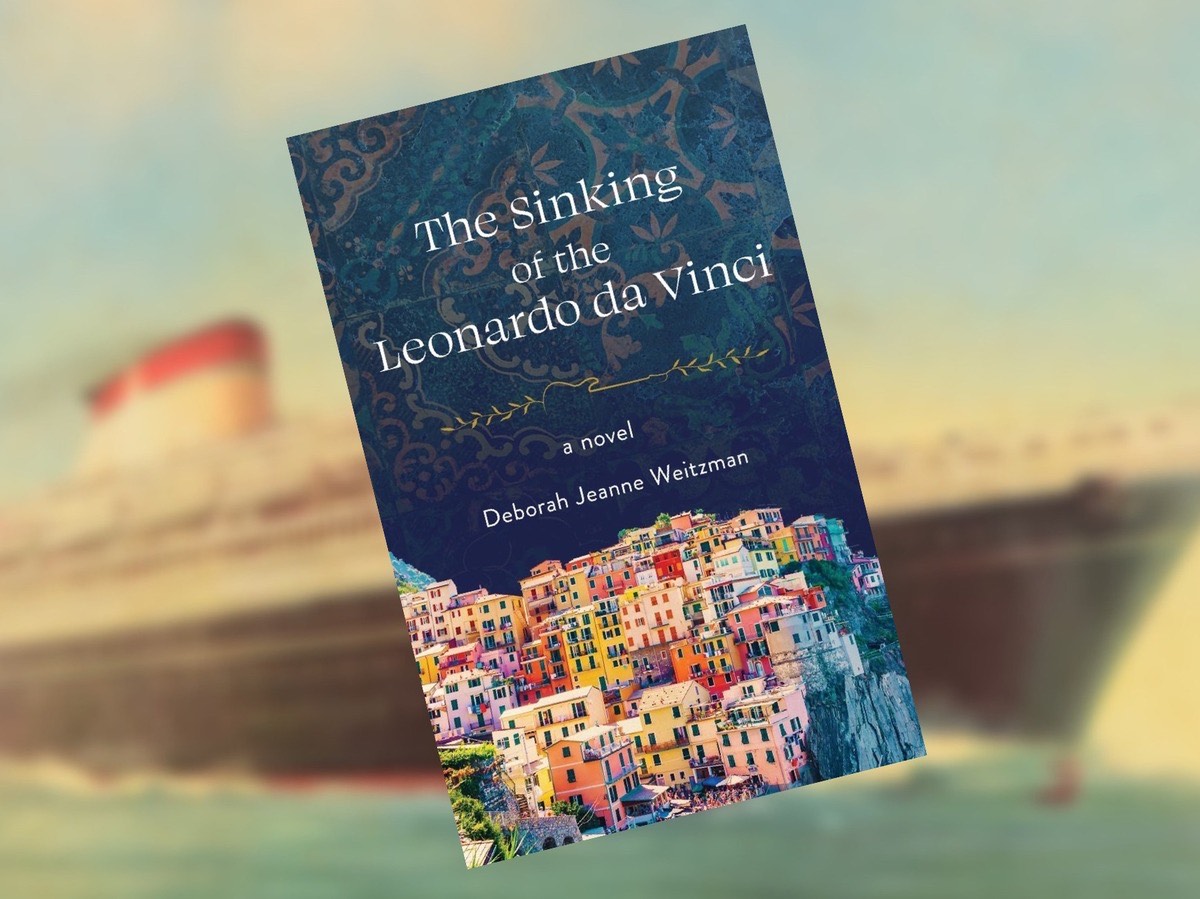This post contains affiliate links. If you click one, I may earn a commission at no cost to you. As an Amazon Associate, I earn from qualifying purchases.
Ocean liners have long carried a romantic allure, serving as classic settings for books and films like Titanic (1997) and An Affair to Remember (1957). Love flourishes at sea amid floating opulence and luxury, free from the conventions of life on land.
Part of their appeal lies in the way they create a suspended reality where time slows, rules shift, and chance encounters can alter the course of one’s life. Deborah Jeanne Weitzman’s The Sinking of the Leonardo da Vinci captures that fleeting, heightened atmosphere beautifully, using the SS Leonardo da Vinci not only as a setting but as a symbol of love’s intensity and transience.
The novel follows two young lovers who meet aboard the titular liner in 1976. It then jumps ahead 26 years to explore how that early, life-altering romance echoes through grief, renewal, and self-discovery. It’s a tender, emotionally honest story about how the past shapes us—and how, even decades later, it can call us back to who we once were.
Many thanks to NetGalley and Köehler Books for providing an advance copy of this book to read and review.
Book Summary
It’s 1976, and 21-year-old Joanna feels like a stranger in her own life. Quiet, introspective, and sensitive, she’s always believed she didn’t quite belong—especially in bustling New York City. She clings to the hope that music and songwriting might offer her a place where she finally fits.

Joanna’s life changes when she boards SS Leonardo da Vinci, the famed Italian ocean liner and sister ship to the ill-fated Andrea Doria, for an 11-day Caribbean cruise as part of her travel agency job. It’s her first time away from her alcoholic mother, and amid the grandeur of the ship, she feels adrift. But then she meets Luca—a young ship’s officer whose fiery passion and gentle tenderness speak directly to her heart. For the first time in her life, Joanna feels truly seen. With Luca, her creative spirit awakens as they visit ports like Martinique, Antigua, and Saint Thomas, falling into a fierce, all-consuming love.
Joanna later follows Luca to Rome, chasing the future they envisioned together aboard the Leonardo da Vinci. But their relationship unravels. Luca, once so vivid, grows distant without explanation. Their love burns out like the Leonardo da Vinci herself, which would ultimately go up in flames in 1980. Joanna’s heartbreak follows her for decades.

Back in New York, she reconnects with Stuart—a former professor and environmentalist. Older, kind, and gentle, Stuart offers the stability and safety Joanna craves. They marry, and Joanna buries her music, silencing that part of herself for years.
When Stuart unexpectedly dies of a heart attack in 2002, Joanna finds herself lost once more. Yet in her grief, something long buried stirs. The artist, the lover, the restless soul she thought was gone resurfaces. In the quiet beauty of Italy’s Cinque Terre, Joanna embarks on a journey of rediscovery, seeking closure and reclaiming the self she left behind decades earlier.
My Thoughts
As romantic fiction, The Sinking of the Leonardo da Vinci is a bit different from many of the books I’ve reviewed on this blog—and I honestly loved it.
Deborah Jeanne Weitzman’s debut novel is beautiful and has incredible emotional depth. Joanna leaps off the page in vivid, relatable detail, while the village of Vernazza and its inhabitants come alive through realistic, carefully crafted descriptions. Characters like Grace, Gino, and Simone feel like real people you might meet walking those sunlit streets.

The novel is told in two parts, spanning 1976 and 2002. The earlier narrative unfolds in the first person from Joanna’s perspective, while the later story switches to third person. The structure creates meaningful bookends, weaving past and present together in a way I found highly engaging. It’s one of those books I couldn’t put down— I needed to see what happened next.
The Sinking of the Leonardo da Vinci touches on grief, loss, passion, and self-discovery in a way that resonated deeply with me. My professional life recently took an unexpected turn, with a sudden office transfer that left me grieving a job I once loved. It’s been extremely challenging. This book, in its tender and honest way, is helping me to process that change.
While the novel doesn’t take place entirely on the Leonardo da Vinci, the ship serves as a powerful symbol of Joanna and Luca’s relationship—magnificent, beautiful, and ultimately doomed to go up in flames.
Conclusion
Overall, I loved The Sinking of the Leonardo da Vinci. It’s a beautifully written, emotionally honest story that will appeal to a wide audience. Anyone who’s experienced loss, heartbreak, or the search to rediscover themselves will find something meaningful in its pages.
This book is also a love letter to place—to a grand ocean liner, to the sun-soaked villages of the Italian coast, and to the quiet corners of our own memories where old hurts and hopes linger. Deborah Jeanne Weitzman captures the bittersweet ache of nostalgia and the courage it takes to confront the past with grace. The Sinking of the Leonardo da Vinci reminds us that even after great loss, it’s never too late to reclaim the parts of ourselves we thought were gone forever.

Leave a Reply